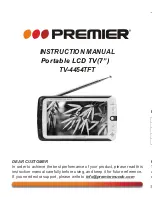
fication is cleared so that the phone number can be displayed. In addition, the SCN, LCK, and RTN keys become STO,
CLR, and RCL keys. Group scan is also disabled if it is programmed. Therefore, calls are received on only the
displayed group when the phone mode is selected.
If the phone mode is not selected, the number keys dial a number only when the push-to-talk switch is pressed. In
addition, the number does not appear in the display, so it cannot be stored or recalled. To exit the phone mode, press the
PHON key again (the SEND key cannot be used). If there is a number in the display, it is erased and cannot be redis-
played unless it was stored in memory. The transceiver always goes into the standard mode when power is turned on.
Using the SEND key to select the phone mode may cause a different system/group to be displayed than when the
PHON key is used. Operation with each key is as follows:
NOTE: If the quick select switch is turned to a locked position, the phone mode cannot be selected by the SEND
key (see “Quick Select Switch”).
Using SEND Key -The system/group preprogrammed for telephone calls is automatically selected. Then
when the phone mode is exited, the system and group that were displayed when the phone mode was entered are
again displayed.
Using PHON Key -
The displayed system and group do not change when entering and exiting the phone mode.
Dialing The Number
In the phone mode, telephone or mobile numbers can be entered at whatever rate is convenient. To correct dialing
errors, press the CLR key to erase the last digit entered or hold the key down to erase several digits. To erase the entire
number, press RCL CLR. Then when the number is ready to be transmitted, simply press the SEND key.
Numbers up to 14 digits in length can be entered. However, only the last 7 digits are displayed. When there are
overflow digits, an arrow appears on the left side of the telephone number. To momentarily display the overflow digits,
press RCL 0. To step through the numbers programmed in memory, repeatedly press the RCL key. If a number has more
than 7 digits, the overflow digits are displayed briefly and then the last 7 digits are displayed.
A number can be dialed in the phone mode without changing the number in the display. Simply dial the number
with the push-to-talk switch pressed. This dialing mode allows calls to special services that require the dialing of addi-
tional numbers after the connection is made. Telephone calls can also be placed without selecting the phone mode by
pressing the push-to-talk switch while dialing the number. However, if too much time elapses between digits, the call
may be terminated.
Storing and Recalling Numbers From Memory
Up to seven telephone or other numbers can be stored in memory and then later recalled. This eliminates the need
to re-enter frequently dialed numbers. Each of these numbers can be up to 14 digits in length. To store a number, select
the phone mode and dial the number as described in the preceding section. Then press STO and a number key from 1-7
to select the memory location where the telephone number is stored. The * symbol can be stored,
but is sent normally
without a pause. If the # symbol is stored, it terminates the call when it is sent. To recall a telephone number, select
the phone mode and press RCL and then the memory location from 1-7.
Telephone numbers can also be programmed into memory by your system operator. Numbers stored in this manner
can have a unique identification in the unused positions of each 14-digit memory location. For example, if the
number has seven digits, the seven-character identification “RICHARD” can be stored with the number. Then
when the number is recalled, “RICHARD” is flashed in the display followed by his telephone number. These num-













































